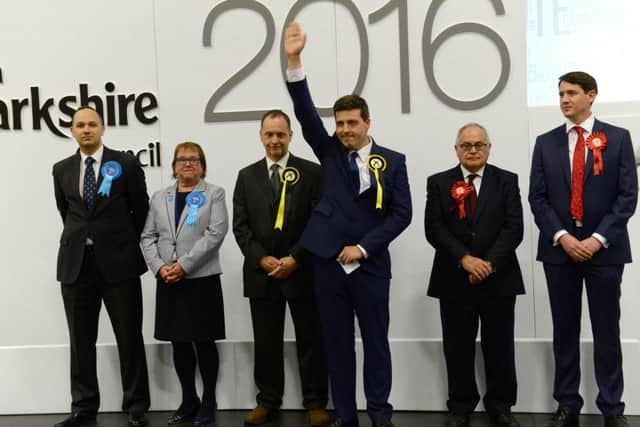General Election 2017: Candidate numbers plummet to modern low


Whether you are prime minister or a member of the Monster Raving Loony party, all candidates are shoulder-to-shoulder as the winner is revealed.
But the poll on June 8 will be different. While each of the four largest parties – the SNP, Conservatives, Labour and Lib Dems – are contesting all of Scotland’s 59 constituencies, independents and smaller parties will be thin on the ground.
Advertisement
Hide AdAdvertisement
Hide AdA total of 266 candidates are standing north of the Border next month –but just 30 of that number are not drawn from the big four.
That’s a huge drop from the last general election in 2015, when there were 346 candidates – with 110 drawn from outwith the big four. In 2010, 335 party candidates stood, including 99 from smaller parties.
In 2005, when the current Westminster constituency boundaries were introduced, the figures were even higher. A total of 370 candidates, 136 of whom weren’t from the big four.
So what explains this drop?
The unexpected nature of next month’s election is a major factor. Theresa May’s announcement on 18 April that she intended to go to the country came as a surprise to nearly all political observers, including many Conservative MPs. The prime minister had previously ruled out a snap election on numerous occasions since taking office last summer.
“We need a general election and we need one now because we have at this moment a one-off chance to get this done while the European Union agrees its negotiating position and before the detailed talks begin,” May said.
While Labour, the SNP and the Lib Dems have the resources and party machinery required to kick-start an election campaign with little notice, many smaller parties simply don’t.
The Greens have been particularly candid on this subject. Co-convener Patrick Harvie, when quizzed on why his party was standing just three candidates in Scotland, said: “Our local branches make their own decisions and most of our local branches have decided they’ve put their energy, time and money into the local election campaigns this year and they’re not in a position to run in every constituency.
“I regret the fact that there will be many Green voters who know that they don’t have a Green candidate this year.
Advertisement
Hide AdAdvertisement
Hide Ad“I regret that and if we had the kind of resources that other parties seem to take for granted, we would be able to do that.”
He added: “(In 2015) we had been able to build up our electoral reserves and we had time to prepare for it.
“I think the contempt that Theresa May showed to local democracy by calling a Westminster election right in the middle of a local election is appalling. I’m not going to make any bones about it, the Greens cannot go knocking on doors of millionaires and billionaires asking them to fill our coffers at the drop of a hat.
“By necessity, we need to focus our efforts, and that’s what we’re going to do.”
UKIP is also contesting significantly fewer seats - 10 next month compared to 41 in 2015. There are still a few lesser known parties standing, including the Women’s Equality Party.
Far left parties such as the Scottish Socialists and Communists are fielding no candidates. The same goes for the far right, with the BNP and National Front choosing not to contest any seats in Scotland.
The end result is that in 36 constituencies, voters will have no one to choose except for candidates from the big four parties.